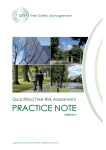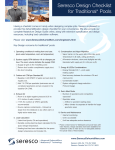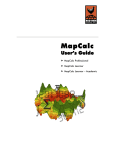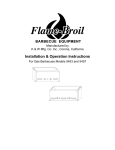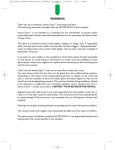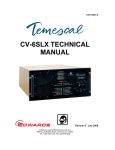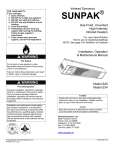Download Check In - EB Lifeguard
Transcript
5/1/2014 Job Requirements Check In 7:30am - 9:00am Physical Rotate to the following groups Union Membership (or service fee) TB test HR Check In Have 2 Photo ID’s out along with your paperwork packet Uniforms Books Uniform Try On/Labeling/ Put On Live Scan Sign Ups Problem Station Sit Down in Seat and wait for Academy to begin Direct deposit form (optional) Personal physician form (optional) PCF (Fill out with HR) Staff Introductions East Bay Regional Park District Lifeguard Academy EBRPD Fire Department Lifeguard Service Unit •Aquatic Manager •Aquatic Supervisors: North and South •Aquatic Assistants : North, South and Programs •Resource Training Officers 2014 Cadet Introductions Name 2014 Academy Schedule Dates Cadet Number Desired Facility Tell the group 1 goal you’d like to accomplish in your lifetime (No Repeats) April 26, April 27, May 3, May 4, May 10, May 11, May 17 and May 18 Plus a minimum of 2 additional training days to be completed by June 15 at an assigned facility. Times Academy start times vary depending on the day. Refer to your group assignment sheet. Be on time! 1 5/1/2014 2014 Academy Locations What To Bring Locations vary by group assignment Lunch, snacks, fluids (container) Your Sun block, hat, sunglasses Trudeau or Temescal. group location will be distributed this week Personal transportation required Setup Carpool early with your group Uniform Swim suit, towel(s), goggles Pencil/pen Waterproof watch Issued books, manuals, materials Foot protection Scoring & Ranking What To Expect Expect to be challenged! The academy will be mentally and physically demanding. Lecture and discussion Reading assignments Group activities Skill demonstrations Skills training Assessment is constant and on-going Scoring is point-based can gain AND lose points Your rank is determined by your point total You will be advised if you fail an evaluated category You Lifeguarding, Medical, Scenarios Physical training, relays, timed drills Quizzes, written tests, skill assessments Scoring Criteria New Lifeguard Test Swim Time Interview Professionalism Punctuality Attentiveness Demeanor Inter-personal skills Communication Teamwork Physical test scores Swimming, running, etc. Written test scores During the lifeguard academy, cadets are allowed 2 absences Lifeguarding skills Physical skills Absence 9 final exams Break Out Questions Absence requests must be turned in 1 week prior to anticipated absence If you miss a day, you will lose points for that day Missing more than 2 days of the academy will result in a dismissal from the EBRPD lifeguard academy 2 5/1/2014 Make-up Procedures Completing the LG Academy Cadets’ continued employment is conditional on If you do miss a day of the academy, it is your responsibility to complete all makeup requirements Cadets who do not complete the makeup packet prior to the end of the academy will not receive a facility placement or subsequent job offer The makeup packet will allow you to make up some, but not all of the points lost by missing the day Conditional Hiring Successful completion of the LG Academy Earn American Red Cross certifications Lifeguarding/First Aid/CPR/AED Waterfront Skills Pathogens Training Administering Emergency Oxygen Title 22 (First Aid for Public Safety Personnel) Successful candidates fill remaining 2014 Lifeguard I openings Bloodborne successful completion of the LG Academy. Passing the Academy is dependent on passing all written tests, assignments, skill assessments, on-site training and accepting a facility assignment You must successfully complete the LG Academy in order to continue employment as a 2014 EBRPD Lifeguard I Will You Be Hired? Hiring occurs preferentially by LG Academy rank The higher your rank, the better your chance of being hired Your rank is determined by your LG Academy point total Facility placement will be based on rank, availability and need What to Expect If you pass the Academy… If you get a provisional assignment… If you pass provisional hire… Important Information and Additional Requirements Expect to work holidays Expect to work 20-30 hours/week 3 5/1/2014 Cadet Packet Today you received: Your group assignment A notebook and pen Folder Directions Contact Numbers Important Events Schedule Lifeguard Service Dates Peak Seasonal Availability Form East Bay Regional Park District Fire Department Standards Absence Request USLA Knowledge Review Questions (print from eblifeguard) Required to turn in by the end of the academy for credit. If you do not turn it in, you will not pass the academy Availability Peak Seasonal Availability Form Due by 5/11/14 (Day 6) of the Academy You are still accountable for the availability indicated on your LG application Peak Season Availability Form provides more detail Written Resources Today you received: Open Water Lifesaving-The United States Lifesaving Association Manual(2nd Edition) (USLA) ARC Lifeguarding Manual LSM (Available for download on eblifeguard.org/LSM) T22 Key Points Manual Be prepared for reading assignments Review assignment instructions You are responsible for understanding the material covered in reading assignments Online Resources Lifeguard Service Manual Introduction EBLIFEGUARD.ORG Username: cadet (all lower case) Password: lifeguard (all lower case) Purpose I-1.1 Lifeguard Academy 2014 Section Combined reference containing Park District policies which are relevant to Lifeguards Organization I-1.2 5 sections Constantly evolving site, but will contain more information as the academy progresses. Introduction Administration Operations Safety Emergencies Associated Resources I-1.3 Page numbers vs. Reference numbers Topics vs. Policies 4 5/1/2014 Uniforms Uniform Inspections Uniforms are an effective way to establish a professional image and Uniforms will be inspected randomly throughout the academy. should always be neat and clean Uniforms immediately identify the wearer as an authority. Uniforms can be especially helpful in emergencies, since the public tends to defer to people in uniform Formal inspections where everyone lines up Informal inspections constantly happen During classroom lectures, cadets must wear their cadet shirt and fanny pack During beach trainings, cadets must wear lifeguard shorts, cadet shirt Properly designed uniforms also provide protection from the and fanny pack elements Points will be deducted if you are not wearing a full uniform, or if your The wearing of the uniform off duty is not permitted as it can tarnish uniform looks sloppy, stained or dirty the image of the entire lifeguard agency Any Questions? Orientation to East Bay Regional Park District Lifeguard Service Lifeguard Service Chain of Command Aquatic Manager North Aquatic Supervisor Pete DeQuincy South Aquatic Supervisor Nick Schriver South Aquatic Assistant Eric Nurse North Aquatic Assistant Aaron Roth Prog. Aquatic Assistant Katy Hornbeck Head Lifeguard Assistant Head Lifeguard Head Lifeguard Assistant Head Lifeguard Swim Facilities - North Region Lake Anza Contra Loma (Lagoon) Roberts Pool Lake Temescal Castle Rock Pool 5 5/1/2014 Tilden Park’s Lake Anza Berkeley Contra Loma (Lagoon) Antioch Roberts Pool Oakland Lake Temescal Oakland Castle Rock Pool Walnut Creek Swim Facilities - South Region Don Castro (Lagoon) Del Valle, East Beach Del Valle, West Beach Quarry Lakes Shadow Cliffs Cull Canyon (Lagoon) 6 5/1/2014 Del Valle East Beach Livermore Don Castro (Lagoon) Hayward Del Valle West Beach Livermore Quarry Lakes Fremont Shadow Cliffs Pleasanton Cull Canyon (Lagoon) Castro Valley 7 5/1/2014 2013 Lifeguard Statistics 523,122—Swimmers 85,844—Prevents 38,259—Lifejackets Loaned 90—Rescues 31—Missing People 29—Boat Rescues 449—Minor First Aid Treatment 61—Medical Aid Treatment 11—Ambulance Transports 1—Resuscitations 0—Guarded Drownings! The Professional Lifeguard The Professional Lifeguard Lifeguards must: Be responsible to protect people’s lives when at the aquatic facility. Maintain a high level of knowledge and skills Act in an emergency. Be able to effectively communicate with the public. Be a leader and team member Be mature, professional and competent. The Professional Lifeguard What characteristics of a professional lifeguard were discussed or illustrated in the video segment? The Professional Lifeguard What behaviors would demonstrate a lack of professionalism? 8 5/1/2014 The Professional Lifeguard The Professional Lifeguard What are some tasks that should be the lifeguard's primary responsibility? The Professional Lifeguard What are some examples of secondary tasks that a lifeguard might be asked to perform while not responsible for primary responsibilities? What are the different places shown in the video where a person might work as a lifeguard? Nonsurf waterfronts Multi attraction facility Waterparks Swimming pool Decision Making Decision making is an important component of lifeguarding. An Emergency Action Plan (EAP) can help you act quickly. In a non-emergency situation, you can take more Legal Considerations As a lifeguard, you need to understand the legal principles involved in being a professional rescuer. Standards of Care Negligence Abandonment Duty to Act Confidentiality Documentation Consent Refusal of Care time in deciding how to act. Use Chapter 1 of your Lifeguarding Manual to EBRPD Lifeguard Service EAPs can be found in answer the following questions. the Emergencies section of the LSM. 9 5/1/2014 Legal Considerations Scenario: You are the lifeguard on duty when you see a young boy running on the pool deck. What should you do to prevent the child from slipping and falling? Legal Considerations Scenario: After you warn the child about the dangers, he once again runs and now slips and falls on the deck. His knee is bleeding and he complains that it hurts. His mother arrives on scene. If you had not tried to stop the child from running What must you do before you can provide care for this child? What should be stated when asking for consent? and then the child got hurt, what legal principle could be a problem for you? Legal Considerations Scenario: The child is very frightened so the mother takes the child in her arms and refuses the lifeguard’s offer to care for the child’s injury. How should you respond to the mother at this point since she has refused care? What should you do if the mother continues to refuse care for her son? Legal Considerations Scenario: You are treating the injury and realize it is time for your shift to end. Legal Considerations Scenario: The mother decides to allow you to care for the child’s injury after all. If you failed to provide the proper care or provided care that was beyond your level of training, and as a result, the boy suffers further injury, what legal principles could be a problem for you? Continuation of Training Completing the course does not guarantee employment. Employers may require their own employment What legal problem could come about if you stop caring for the young boy? evaluation. Skills learned need to be practiced. 10 5/1/2014 Break 10 minutes Orientation and Training Annual or preseason orientation and training Often occurs prior to the summer season Should include a review of knowledge and skills Facility management provides training to meet government requirements Policies and procedures manual provides information such as: In Service Training Should be done on a regular basis Helps maintain knowledge and skills at a professional level Provides an opportunity to practice as a team Best practices: minimum 4 hours per month Periodic Lifeguard Evaluations Administrative policies and procedures Personnel policies and guidelines Standard operating procedures Possible In Service Training Topics Surveillance and recognition Water and land rescue skills Emergency response drills Decision making protocols Facility rules and regulations Customer service Records and reports Physical conditioning Other Opportunity May be performed by your employer or through a Lifeguard Instructor: Ages 17 and up contract agency, or by a combination of both May be announced or unannounced May include: Lifeguard Management Course Water Safety Instructor: Ages 16 and up Pool Operator Training Observations of lifeguards performing surveillance Skills evaluation Check of the facility related to the lifeguard operations 11 5/1/2014 Being Part of a Team Emergency Action Plans Lifeguards must communicate and work together Guide the actions of the lifeguard and other team effectively as a team. Critical elements for working effectively as a team include: Describe what needs to be done and by whom members in emergencies Effective communication Trust Mutual respect Commitment Cooperation Safety Team A lifeguard is part of a broader safety team. A safety team includes: Management and maintenance staff. Local and emergency response staff. Facility Safety Rescue equipment must be available and in working order at all times. Certain equipment—such as a rescue tube, resuscitation mask and gloves—must always be worn or carried so that it is instantly available. Lifeguards must have a whistle to signal an emergency. Facility Safety You are conducting an opening facility safety check and you find a loose bolt on a pool ladder. What should you do? Facility Safety You are on duty conducting patron surveillance and a patron reports to you that someone spilled shampoo in the locker room and the floor is very slippery. What should you do? 12 5/1/2014 Safety and Surveillance Facility safety checks are a secondary responsibility and must not be done while performing patron surveillance If you observe problems with equipment or other problems are reported to you, you should notify a member of the safety team, a supervisor or another lifeguard not performing surveillance duties. Weather Conditions Weather affects the safety of swimmers both outdoors and indoors. Lifeguard management should: Lifeguard must: Thunder or Lightning Clear everyone from the water at the first sight of lighting or first sound of thunder Keep patrons and staff out of showers and locker rooms Do not use a telephone connected to a landline except in an emergency. Keep everyone away from windows and metal objects. Watch for more storms and monitor weather reports Wait 30 minutes after the last lightning sighting or sound of thunder before resuming activities. Monitor weather alerts. Keep lifeguard informed of sever weather alerts. Tell management when they see severe weather. Know and follow procedures for clearing the water and deck. Outside During Thunderstorm If caught outside in a thunderstorm and there is not enough time to reach a safe building: Keep away from tall trees standing alone and any tall structures. Keep away from water and metal objects. Keep as low to the ground as possible but do not lie on the ground: Weather Conditions Other weather conditions may cause safety concerns Fog Wind Heavy rain Clear the pool or waterfront if visibility is Rules and Regulations Rules are required by state and local health departments and individual facilities. Lifeguards must know and enforce all safety rules Rules can be communicated through signage and verbally impaired by waves or increased turbidity. In the event of a power failure, you should clear the pool If weather conditions cause safety concerns, you also should clear the deck. 13 5/1/2014 Rules and Regulations Activity: Reason for the Rules Worksheet 1-1 in your group Entries and Approaches The following video segment will illustrate skills for entering the water and approaching the victim. We will practice the skills later at Temescal Break 10 Minutes Management and Facility Safety Your job is to follow and enforce your facility’s rules and regulations. The management team’s job is to ensure that the facility is in compliance with the law and to make sure you are enforcing facility rules correctly. Management’s Responsibility Create, review and revise facility policies and procedures, rules and regulations and EAPs as needed. Address unsafe conditions. Comply with federal, state and local laws and regulations for facility operations and employment. Maintain records regarding the facility and its employees. Assist after an emergency. 14 5/1/2014 Regulations and Facility Operations Regulations that affect your facility include: Lifeguard certification requirements. Facility design and safety features. Pool capacities. Staff training requirements and lifeguard competencies. Ratio of lifeguards to patrons. Water sanitation procedures. First aid equipment and supplies. Lifeguarding equipment. Diving depths. Regulations Federal and State Labor Laws: Affect tasks lifeguards younger than 18 can perform Are more stringent for 15 year olds OSHA regulations keep employees safe while on the job. The Hazard Communication Standard informs and protects employees form exposure to hazardous chemicals. Material Safety Data Sheet Employees Right to Know Each chemical has a MSDS Which hazardous chemicals are in the facility. It describes special precautions for storing and using Where those chemicals are stored in the facility. chemicals, as well as safety precautions when cleaning up spills. It also explains what to do if you come in contact with a chemical. The MSDS must be easy to find. The specific dangers of those chemicals. How to identify chemical hazards in the facility. How to protect themselves and others from being exposed to hazardous chemicals. What to do if they or others are exposed to such hazards. Bloodborne Pathogens Standard OSHA Regulation Designed to reduce the risk of disease transmission while on the job Employer must provide exposure control plan: Helps protect employees from being exposed to bloodborne pathogens Instructs employees about what to do if exposed The Drowning Process Your primary responsibility is to ensure patron safety and protect lives. Most of your time is spent on patron surveillance Be alert and attentive at all times Drowning is a continuum of events that begins when a victim’s airway becomes submerged under the surface of the water. Can be stopped, but if not, will end in death. 15 5/1/2014 The Drowning Process The process of drowning begins when water enters the victim’s airway: causes involuntary breath holding and then laryngospasm (a sudden closure of the larynx or windpipe). The victim is unable to breathe but may swallow large quantities of water into the stomach. As oxygen levels are reduced, laryngospasm subsides and the victim gasps water into the lungs. The Drowning Process: Interventions Intervening variables can affect the outcome. Giving ventilations often will resuscitate a victim, The Drowning Process Due to inadequate oxygen, the victim may suffer cardiac arrest: Can occur in as little as 3 minutes after submerging. Brain damage or death can occur in as little as 4 to 6 minutes. The Drowning Process What does this understanding of the drowning process mean for you as a lifeguard? especially if only 1 ½ to 2 minutes have passed. Unconscious victim may have isolated or infrequent gasping in the absence of other breathing, called agonal gasps. Gasps can occur even after heart has stopped. Normal, effective breathing is regular, quiet and effortless. With agonal gasps, care for victim as if person is not breathing The Drowning Process: Survival Effective Surveillance—Victim Recognition The greatest chance survival is recognizing when a person needs help or is in danger of drowning. The sooner the drowning process is stopped, the airway is opened and the victim is resuscitate, the greater chance of survival without permanent brain damage. 16 5/1/2014 Effective Surveillance—Victim Recognition Effective Surveillance—Victim Recognition What are some situations that could lead to trouble What are the characteristics of a distressed for a weak or nonswimmer? What are some situations that could lead to trouble for a swimmer? swimmer? (Hint, you can use Table 3-1 in you Lifeguarding Manual) What instinctive drowning response behaviors would you see in a drowning victim who is struggling at or near the surface? Effective Surveillance—Victim Recognition In some cases, what might a very small child look like when in trouble in the water? What are some conditions that could lead to a patron becoming a drowning victim who appears to be unconscious? Effective Surveillance—Scanning Effective Surveillance—Scanning Effective surveillance also includes scanning a visual technique for deliberately observing patron behaviors and actively looking for signals that patrons need help Effective Surveillance—Scanning What are some important factors for effective scanning? 17 5/1/2014 Zones of Surveillance Responsibility Zones of Surveillance What should you do if the number of patrons increases in your zone and you feel unable to adequately provide surveillance? Zones of Surveillance You are seated in an elevated lifeguard station and Zones of Surveillance A group of preschool-aged children enter your zone. there is a glare on the surface of the water making it difficult for you to see. What should you do? They are all weak swimmers. Although there are not many children, you feel that you are not able to watch the area adequately. What should you do? Injury Prevention Strategies Injury Prevention Strategies Aquatic injury prevention is part of the facility's risk What are some examples of life-threatening management program. Risk management includes” What could be some causes of non-life- Identifying dangerous conditions or behaviors that can cause injury Taking steps to minimize or eliminate them conditions? threatening conditions? Your goal should be preventive lifeguard, although you should be ready to perform rescues. 18 5/1/2014 Injury Prevention Communications with Patrons You must understand how injuries occur to prevent Important injury prevention strategy them. You need to: Includes enforcing rules and regulations Increase your awareness of risks and hazards. Help patrons avoid risky behavior Help develop a safety conscious attitude. Variety of means to communicate risks to patrons: Communications with Patrons What information do patrons need to know concerning risky behavior? How can you politely get a patron’s attention? Signs listing rules Print materials listing rules handed to patrons Lifeguards informing patrons of rules Communication with Patrons Whistle: a communication tool Gets patrons’ attention Activates EAP Facility’s EAP should specify number and type of whistle blasts to indicate an emergency Practice using the whistle Use the whistle cautiously—overuse can cause patrons and staff to ignore it. Injury Prevention Strategies Injury Prevention What did the lifeguard do to protect patrons when thunder was heard? What strategies did the lifeguard use to try to get the resistant man to understand the importance of clearing the pool? 19 5/1/2014 Guarding a Variety of Activities Organized Activities: What Questions to Ask Different types of activities might take place when you are lifeguarding. Open or recreational swim challenges include: Young children who are not adequately supervised Patrons engaging in risky behaviors in or out of the water A child who has wandered off from parents or caretakers Nonswimmers who have ventured into water that is too deep A patron who suffers a sudden illness. Instructional Classes What things could go wrong that are unique about this activity? What is the swimming ability or comfort level in the water of patrons in this activity? Are there any unique challenges or obstacles to recognizing an emergency, approaching a victim or performing a rescue? Do participants have any medical conditions that increase the chances for sudden illness or injury due to activity? Instructional Classes Additional supervision is provided by trained What might be some unique risks of participants in a personnel. Instructors or coaches are part of the safety team. What might be some unique risks of participants in Should have training to ensure safety water exercise class for older adults? swim lessons? Instructors or coaches have responsibility for classes or teams, but that does not take away from your responsibility Aquatic Sports and Open Water Events Swimming Diving Guarding Special Attractions What might be some unique risks of participants in competitive sports? Water Polo Triathlons Participants may be experience swimmers, but are not exempt from needing lifeguard on surveillance duty 20 5/1/2014 Guarding Special Attractions Many facilities have special attractions that Guarding Special Attractions Worksheet 2-1 With your table create challenges for lifeguarding Water-play areas specifically for young children. Play structures Inflatable play structures Special rides and attractions Water slides Winding rivers. Wave pools. Assignments Directions Read Chapter 1, 2 , 3, 5, 7 and 8 in the Lifeguarding Manual Be prepared to answer questions about what you read Directions Lunch! Clean up trash Head over to Temescal We’ll resume in 45 minutes Consider following other people, especially if you don’t know where you’re going. DON’T BE LATE! 21























